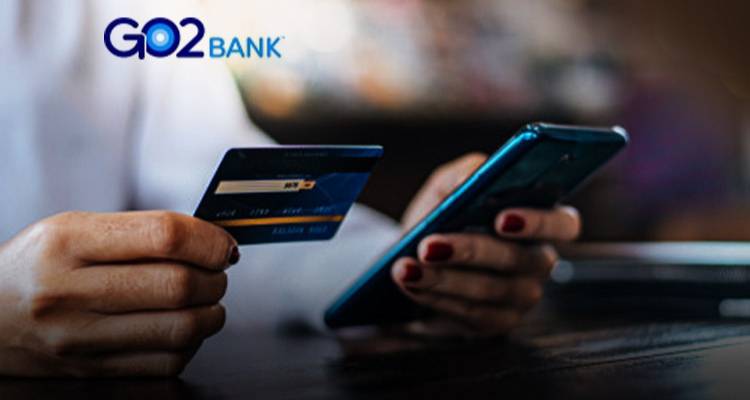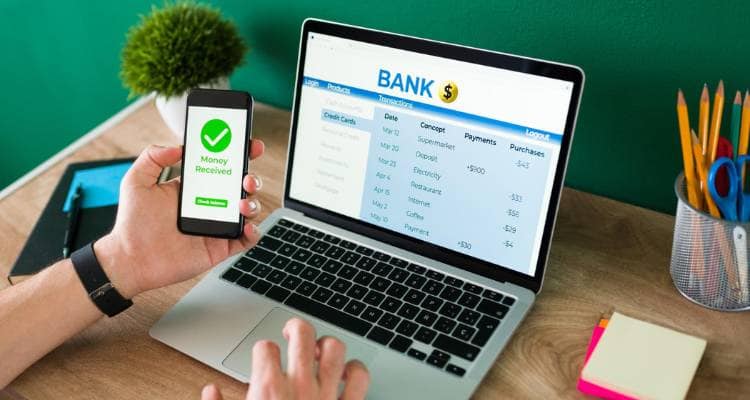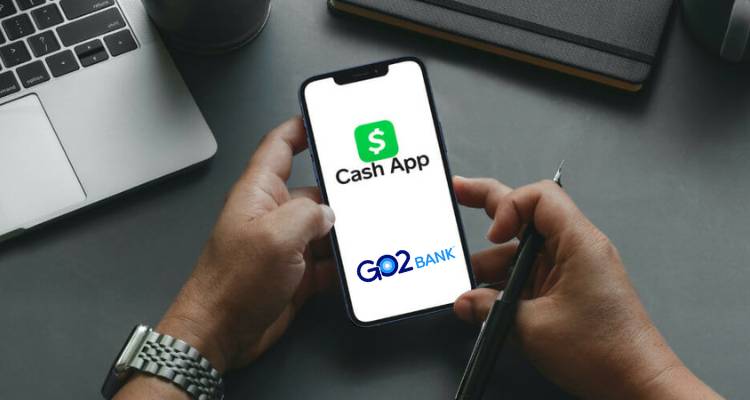These days we want everything to be done quickly and promptly. The same goes for money transfers. Not long ago, all money handling tasks required a personal visit to the bank and long waiting in queues. Technology came a long way and today you can transfer your money using routing number, basically to any account in the world. Depending on the technology that transfer-related banks use, it can be reflected immediately, it can take a few hours or up to 3 working days.
International transfers typically take longer than domestic ones. Moreover, the transfer between accounts of the same bank is also normally faster.
Herein we will devote most of our attention on transfer money using the routing number and account number, as the title suggests. By the end of this article, you will be a money transfer guru, able to perform or your future money transfers with more confidence and ease.
Before we move one, let’s make sure we are all caught up with what routing number and account number are. (Though we will look at both closer in the following section.)
A routing number is a number that represents your bank, and the account number represents a specific bank account (assigned either to an individual, company, organization, etc.). A solid analogy would be looking at it as if routing numbers were apartment buildings (their address) and account numbers were apartment numbers. Knowing both, one can locate you. Now that we have covered the basics, we are ready to dig deeper.
Understanding Routing and Account Number
Your account number is issued by your bank, the one that holds your checking account, a savings account, or another type of bank account. All account numbers are unique to each account, so nobody will have the same account number as you within your bank, and each of your accounts will have a unique number in case you have several accounts. However, you should know that it is possible for accounts at different banks to have the same account numbers, just as it is possible for people to have the same apartment numbers with different apartment buildings if we use the above analogy.
The latter already tells you that providing an account number alone probably isn’t going to be enough for a successful transfer.
Routing numbers are used within the United States banking system to identify banks. When it comes to larger banks with multiple branches, they may have multiple routing numbers. Routing numbers are sometimes referred to as ABA numbers, coming from the American Bankers Association – an industry group that developed them and put them to use.
Information You Need in Order to Transfer Money
There are several different ways to transfer money. Yet, there are three main options or transfer types that cover all option:
- From your bank account to another bank account (domestically or internationally).
- Using a service that allows your recipient to withdraw money into their bank account.
- A manual process where the recipient (or possibly you) can deposit your money into their bank account.
All these processes require a different set of information. Especially, when you deal with international money transfer, things can get rather complicated. It depends on the country that the corresponding account is located in. For international transfers, you normally need a bank’s name, a bank’s number, account number, account holder’s name, and address. In some cases, you need also need to know the bank’s address.
However, things are rather simple when you look at domestic money transfers. It this case routing and account number will do the trick. Though keep in mind, that you must know these two numbers for both transfer-involved parties.
If you don’t know your routing and account number, you can find them either on your checks (the routing number is the nine-digit, left-most number along the bottom and your account number is the center number along the bottom your check), through your online banking account, or by calling or visiting your bank.
Of course, you always need to know the amount of money you want to transfer and make sure that your account has that amount available.
We will take a closer look at some of the most popular ways to transfer money using the routing number and account number in the upcoming section.
How to Transfer Money Through Routing and Account Number
First, you need to know that the routing number alone will not be enough to send money in most cases. Normally, you will also need the account number (which alone may be enough if you and the recipient are using the same bank). Having both of these numbers may be enough in many cases, depending on the transfer type (we will go into details in the following section).
If you have access to your online banking apps (which vary vastly), this will be the easiest way to transfer money using the routing number and account number. Typically, you will need to click the ‘Send Money’ option or similar (sometimes it is under Transfers > Send Money or Make a Payment). Then you will most likely need to select the ‘Send to Account’ option (or something rather similar). To proceed, you will need to select a recipient and enter the routing number and account number, select/enter the amount you want to transfer and finalize the process by entering some sort of code or double confirmation (some account may not request that; it depends on your banking provider).
Keep in mind that the exact process varies on the type of method you choose to use. Here is a list of options that enable you to send money either domestically or internationally:
- Bank to bank funds transfer
- Using Billpay, also known as online transfer or payments
- Using TransferWise
- Using services that the recipients sign up to receive money from the sender’s account, for instance, the recipient may receive an email with a link to a form requiring them to fill their bank details for the transfer.
- The sender depositing money directly to the recipient bank using the recipient’s account number and routing number.
- The sender transferring money to a recipient using online banking apps without the bank’s intervention.
- The sender using the check transfer method whereby he or she has to fill in the amount of money to send and either deposit the check at the bank or send it by mail.
- The Sender using a money order whereby he or she can send money by mail after providing your bank details. Most of them require you to understand how to send money with account and routing numbers.
Popular Ways to Transfer Money Using Routing Number and Account Number
This section is the one that will provide you with extreme value. Below we will list several most popular ways to transfer money using the routing number and account number. Just move to the subsection that corresponds to your case and read the details.
The information below will help you make the right action steps and complete the money transfer process with confidence.
1. Bank to Bank WireTransfer (Domestic or International)
You must have heard the expression ‘money will be wired’ or similar before, right? If not in person, then you’ve surely picked it up in the movies. These days this option is rather easy, especially for domestic wire transfers.
Domestic Wire Transfers
In most cases, if you send a wire in the US, you just need to collect a few pieces of information from the recipient (name, address, wire routing number, and account number) and then appear in your bank branch in person. During the transfer you made with the cut-off time of your bank, the money should arrive at your recipient’s bank account on the same working day. Quite easy.
For most banks, you have to go and request the wire transfers individually. If your bank is in another part of town or you have a packed schedule, this could be a problem. Cables are expensive, too, especially to send a smaller amount. Depending on the bank, the price can range from $15- $35 or more.
International Wire Transfers
If you are looking to make international wire transfers, costs rise even more. On top of the upfront costs of the bank (which can range from $35- $60), you will be hit with the poor exchange rate and bank fees may be up to 3 flat from correspondent banks in addition to the fee charged by the receiving bank. It all adds up quickly. International transfers also take a little more time. Anywhere from 1 to 5 business days depending on your recipient countries.
Costs and even speed-wise, you’re almost always better to use TransferWise your bank to wire (SWIFT) international transfers (see the subsection below).
2. Bank to Bank TransferWise Transfer (Domestic or International)
TransferWise began as a global platform for peer-to-peer connecting people and their money around the world. By using smarter, new technology they connect local bank accounts in their countries, skipping international banks hefty charges, giving users the real exchange rate (the same ones you find on Google or XE) on their transactions, and help people to save on money handling a lot.
Although it began as an international service, TransferWise has expanded to domestic selection with an alternative to traditional banking such as multi-currency accounts indefinitely.
You can sign up for an account for free indefinitely. No monthly fees. You’ll find, just a small fair fee when you switch between currencies or send money in the US or abroad.
Once you have prepared and have completed the verification process, you can activate your account and start your limit hold the balance in dozens of currencies – send money around the world. Or just in the United States. You can also get a multi-currency debit card with TransferWise, which you can use to pay for goods and services throughout the world.
If you would like to use TransferWise, visit their official website, and create your account. It is free. After you set up and hold the balance, you can send money online with a click on your phone or computer.
| Here are the main pros of using TransferWise | Cons of using TransferWise |
|---|---|
| Money usually arrives next business day morning. | The first time around you will have to go through the verification process with TransferWise, which may take several business days. |
| Your recipient does not need to do anything to get money. | Paying by credit/debit card is slightly more expensive than paying by direct debit via your bank account. |
| You can pay with your debit card if the amount is too high. | |
| You can send money to both international and domestic. |
3. Bank-to-Bank Option – Billpay (US Domestic Only)
Many banks have been listening to the pain of their customers and set up an inexpensive way people can send money online. This option is often called something to the song “BillPay” or “online payment/transfer”.
What this means is that you may be able to sign in to your online bank account and select the option to send money to a bank account for your recipient (by filling only their name, address, their ACH (Automated Clearing House) routing number and account number) without ever visiting a bank branch.
This makes things way more convenient /at least for those who know their way around computers or smartphones). However, there are a few things you should know.
Depending on your bank but in some cases, they may just write a check (based on your request) and send it to the recipient. This could be a problem because the receiver may not be able to physically go and put it in their bank. Make sure to check with your bank to verify the methods they use to send money requested by BillPay.
Also keep in mind, that this method may take anywhere from 1-7 business days for the money to arrive. The Bank of America offers next day and 3-day transfers that can deposit money straight into your recipient’s bank account.
| Here are the main pros of using BillPay | Cons of using BillPay |
|---|---|
| Typically you will be able to set everything up online within your online banking portal. | You need your recipient’s bank details ahead of time |
| It is free or at a very low cost. | It’s limited for transfers inside the US. |
| In some cases, your recipient may actually receive a check and have to deposit it. | |
| It can be rather slow, sometimes up to 7 business days. |
4. Bank-to-Service-Bank Option
This option is suitable for tech-savvy recipients as they will need to sign up for other services (if they are not already using it). It actually gives you several options to get the money to the bank accounts of others. In general, there are 2 ways in which these services occur:
- Recipients will get an email or a notification and will then need to enter their banking details (option 1)
- Recipients will need to sign up for this service, and then from there they will get to enter their banking details (option 2)
Bank-to-Service-to-Bank Option 1: Recipient Fills in their Details
With some services, all you need is an email address or phone number of the person you are sending money to. Once you’ve paid for the transfer, your recipient will get an email or a notification of a kind of service that you have to send them money. From there, the recipient will need to enter their bank account details (usually a 9-digit routing number and account numbers, they can find in their checks).
Semi-downside is that, in many cases, after the recipient has entered bank details, that bank account might ever-after be connected to a specific email address or certain phone number.
Most popular service are:
- PopMoney (US domestic only)
- Zelle (US domestic only)
- Chase Quick Pay (US domestic only)
- Wells Fargo SurePay (US domestic only)
Bank-to-Service-to-Bank Option 2: Sign up for the Service Required
In this scenario, your recipient will need to register with the service. From the service, you can send them money. Once the recipient is informed you’ve sent them their money and that is processed and reflected in the balance on their end, they must go through the steps to withdraw or transfer money into their own bank accounts.
Most popular service are:
- Facebook Messenger Payments (US domestic only)
- Snapchat Snapcash (US domestic only)
- PayPal (US domestic and international)
- Square Cash (US domestic only)
- Venmo (US domestic only)
5. Depositing Directly
Once in the position of routing number and account number, you can easily deposit money directly. This can be done by calling your bank and asking them to facilitate the direct transfer or by logging into your online bank account on your computer, tablet, or smartphone. Whether you can actually make a direct request for depositing directly via phone, depends on the bank you are using. Moreover, the exact steps in online banking also vary greatly between your banking service providers.
This process is the easiest and fastest for receivers that use the same bank as you. With different banks, you may need to provide more information on the recipient. These processes are pretty straightforward and not all that complicated, especially once you get used to it.
6. Check Transfer
To many younger generations, this way of money transfer may seem highly old-fashioned and outdated. And to be honest, it really is. Yet, you’d be surprised to see that many transfers still use checks.
The best checking accounts provide their holders with free checks. To transfer money by check, you just need to write a check (fill in the amount, the recipient, and sign it) and then cash it in another bank. The emergence of mobile check deposits also means that you may not need to visit the bank to deposit checks.
Checks work in a very universal way and are as such a solid method that everyone can use. Great thing is that the recipient can cash then if without owning a bank account. One thing to note is that the check is not a good option if you need to transfer the money urgently and fast. It may take several days or even a week after your deposit check for it to actually be reflected.
7. Transfer Money From Bank Account to Prepaid Card Online
In order to use a prepaid card to make any payment, you have to get money on it (top it up). Once the funds are on the card, it can be used. However, a prepaid card without any money on it is just a piece of plastic. Keep in mind that a prepaid card is completely different from a debit card or a credit card, which can be automatically connected to your accounts. This fact makes prepaid cards safer; only the amount on them can be spent.
With having a bank account, it becomes easy to recharge your prepaid card. These days there are several online money transfer options. Many prepaid cards also connect with apps that enable you to refill them using your smartphone. You can also use PayPal, Payoneer, or Skrill(and other online money transfer platforms) to refill most prepaid cards, once they’ve been connected with your account. Of course, you can also visit your bank and recharge your card by authorizing money transfer to the prepaid card’s account. You may also use your bank’s online services to send money to the prepaid card’s account.
It is important to take caution when using an online money transfer. If you are using a public computer, you should be very careful that no one is looking at what you are doing, use VPNs or incognito options. Also, remember to erase all the browsing history after logging out of the public computer. In fact, the best way to use online banking services is to use your bank’s app on your smartphone. Apps tend to be more difficult to hack and thus more secure.
8. Get Cash with Account and Routing Number
Many people send money to their family and friends for different reasons; helping with bills and school fees, funding individual projects, and many more. Getting money over with the use of an account and routing number is easy, efficient, fast, and affordable (very low fees in certain methods). Almost everyone can use an online money transfer option these days to send you money to your account. Of course, this is possible after you’ve provided them with your account number and routing number.
Since we all get a bit more cautious when larger amounts are transferred, there is an option of contacting a bank to deliver a personal or cashier’s check, which can then deposit at their bank for cashing. Many banks also offer apps that can help you deposit checks using your smartphone. In this case, the bank usually requires the routing number and account numbers of both parties (yours and the sender’s).
Cashier’s checks are the best option if you need money urgently. They enable you to cash out immediately as opposed to regular checks, which require a few days for processing. There may be fees required to complete the fund’s transfer so it is important to check with your bank.
How to Avoid Issues with Transfers
When money is being handled and transfer many people resort to fear. Though there is no way to completely reassure you that nothing will go wrong, there are ways that must be applied to help you achieve that ease of mind and also make sure that things are done properly.
- Double-check details : Always double-check the amount you enter, the account number, and routing number, and other personal information that needed to be entered. Correcting errors, later on, can sometimes not be possible, moreover, it will cause delays and often include fees.
- Ensure there is enough money on your end : In most cases, the transaction just won’t go through if you don’t have enough funds on your end. In some cases, this will result in costly overdrafts, which you really want to avoid.
- Get in touch with customer care : Whichever method you are using, there is always customer service available. So, if you are not familiar with the platform, do not assume how things work. Rather call their customer support and ask for guidance. If the first time is done properly, you will make it right next time around on your own.
How to Withdraw Money Using a Routing and Account Number
Up until this point, we were focused on the sender’s point of view. However, normally the whole purpose of sending the funds if for the receiver to be able to get their hand on the money and use it as needed/wanted.
Luckily there are several options to how a receiver can get the money. Of course, those options are always limited in regard to the method that was used to send the money. Most of the methods using routing and account numbers to transfer money will result in funds eventually settling in on the receiver’s account.
The most common way to withdraw money from the account is ATMs. However, if all you have is your account number and your routing number, the ATM will not be an option for you. You will need to visit your bank in person. There you will fill out a withdrawal slip and use it to get the cash. You can also cash out a personal check if you prefer it over the cash. In both of these cases, you will also need some sort of identification document.
The best thing about this ‘over-the-counter’ withdrawal using routing and account number is that unlike ATMs it has no daily limits. You can withdraw as much money as you have available on your account. For the amounts greater than $10,000 you will need to explain provide a reason for an IRS report. If the amount is very large, there may be additional waiting time required.
Generally speaking, this kind of withdraw is safe and easy. Just pay extra caution if you then plan to walk around with a lot of cash on you.
What are the Common Online Money Transfer Platforms? (Apps and Online Payment Tools)
These days there are many payment apps and online payment tools available. All are available in the USA, however, are not available in all other countries of the world. As such, make sure to choose the one that is available for both parties in your case.
Moreover, the fees vary noticeably. PayPal, for instance, is one of the most widely spread and most popular, however, their fees tend to be relatively high. Thus, do you research if you want to go with the most affordable option?
The most common apps and online payment tools include PayPal, Payoneer, World Remit, Skrill, Venmo, Azimo, Stripe, and Western Union.
Some of these require a lot of documentation to fully unlock your account, with others it is simpler.
FAQ – Frequently Ask Questions
Can You Send Money with just a Routing Number?
No. The Routing number of the recipient alone is not enough. You also need the recipient’s account number.
Do banks charge for a bank transfer?
It depends on what kind of transfer are you referring to, however, some sort of fee is almost always related. The sender is charged for that fee. Using bank wiring can result in rather high fees, especially if you send money abroad. Thus make sure to explore alternative options and always check with your bank to ensure that you know what sort of fees you should expect.
How do you avoid bank transfer fees?
Using BillPay or TransferWise can help reduce those costs noticeably. Though there are still certain transfer fees present. These days there are also several online banking options, such as Revolutor N26, which offer a free transfer.
How do I avoid international wire transfer fees?
Again, in order to avoid high wire transfer fees, you will want to resort to alternative options presented herein. Those also have fees related to transfers, however, are typically much lower. Sending physical checks or money is also an option.
What happens when my routing and account number gets exposed to the public?
If those who see your routing number and account number are decent people, nothing bad can happen. Those two numbers don’t give an average Joe much more power than to send you money or request money from you (which you need to confirm for it to take place).
The problems might occur if those numbers got in the hands of professional hackers or fraud cons. Then they may be used to hack into your account or to conduct frauds. However, the chance of that happening is relatively small, thus it makes no sense to be all paranoid.
Closing Thoughts
Above we have covered a lot. You now know what routing number and account numbers are and how to use them to transfer money. You’ve learned about multiple ways of transferring money using those two numbers and which gives you a chance to save a noticeable amount on fees.
You’ve also learned about modern money transfer apps and online platforms that can be a great and highly practical method to get money around fast and from the comfort of your home.
In 2021, you should not stress over getting money around. There really are many options available. Moreover, with blockchain technology rapidly evolving, new even more secure and cheaper options are rising daily.
Soon, we will get to a point when you will transfer money to anyone you want, anywhere in the world with extremely low fees. This is something we should all aim for and this is something a free world deserves.





